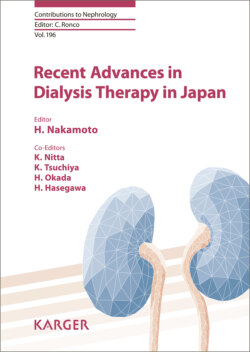Читать книгу Recent Advances in Dialysis Therapy in Japan - Группа авторов - Страница 53
На сайте Литреса книга снята с продажи.
Stroke in Dialysis Patients
ОглавлениеCerebrovascular disease is a major cause of death in dialysis patients, who have a much higher incidence of stroke compared with the normal population [1, 2]. Strokes in dialysis patients are characterized by a higher incidence of hypertensive intracerebral hemorrhage (ICH) compared with the general population [1, 2]. The high incidence of ICH in dialysis patients may be due to high rates of hypertension, low cholesterol, inflammation, and other risk factors for ICH, which are considered to increase the incidence of hemorrhagic stroke in these patients. In addition, antithrombotic drugs and anticoagulation therapy (systemic heparinization) during repeated hemodialysis (HD) sessions, which are administered to many dialysis patients, may also increase the occurrence of hemorrhagic stroke.
However, Toyoda et al. [3] found a recent decline in the incidence of ICH and an increase in cerebral infarction (CI), based on their comparison of data from 1980 to 1996 showing incidences among all strokes of ICH 52%, CI 41%, and subarachnoid hemorrhage 7% with those from 1997 to 2002 showing respective incidences of 29, 68, and 3% for these conditions. In addition, in the statistical survey performed by the Osaka Society for Dialysis Therapy, “Overviews of Patients with Chronic Dialysis Patients in Osaka, as of December 2016” [4], ICH, CI, and subarachnoid hemorrhage occurred in 25.8, 66.2, and 8% of all stroke cases, respectively, in 2016 (n = 627) (Fig. 1), similar to the values in the study reported by Toyoda et al. [3].
Fig. 1. Details of the development of stroke in dialysis patients (n = 627). Cited from the “Overviews of Patients with Chronic Dialysis Patients in Osaka,” as of December 2016. SAH, subarachnoid hemorrhage; ICH, intracerebral hemorrhage; CI, cerebral infarction.
